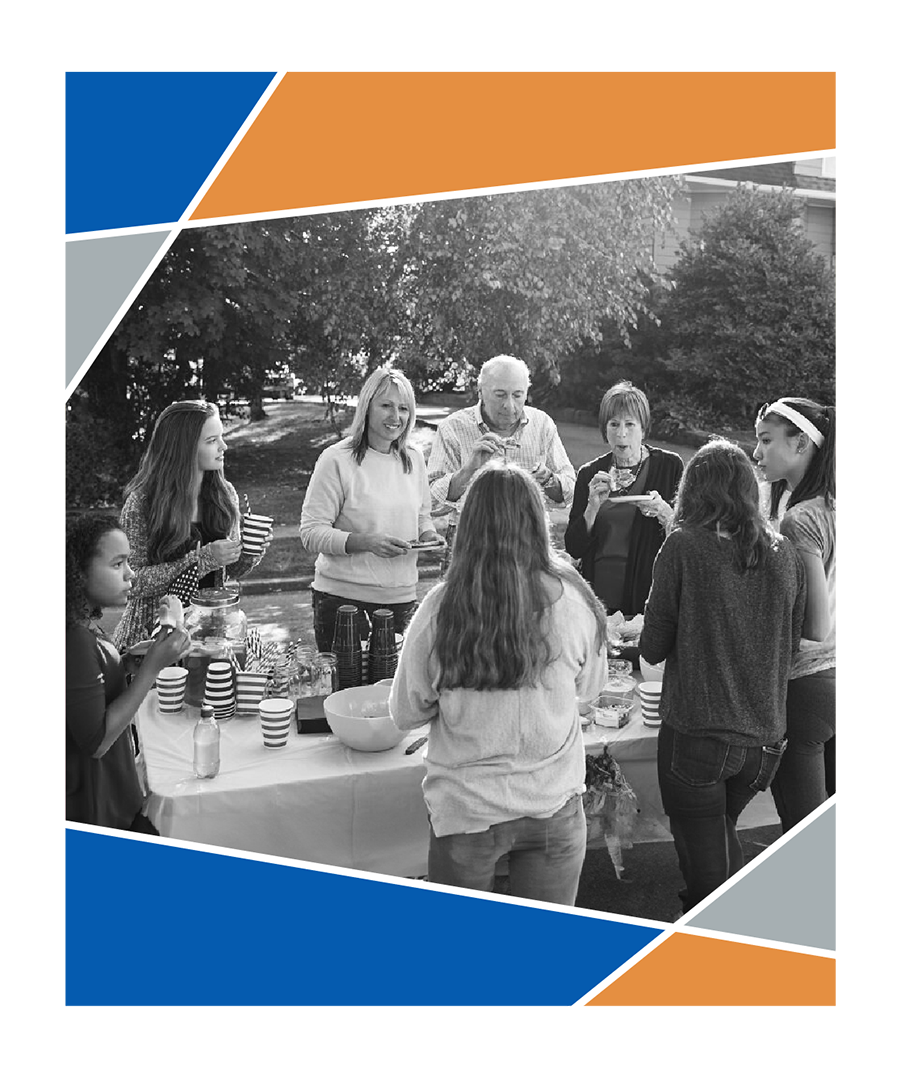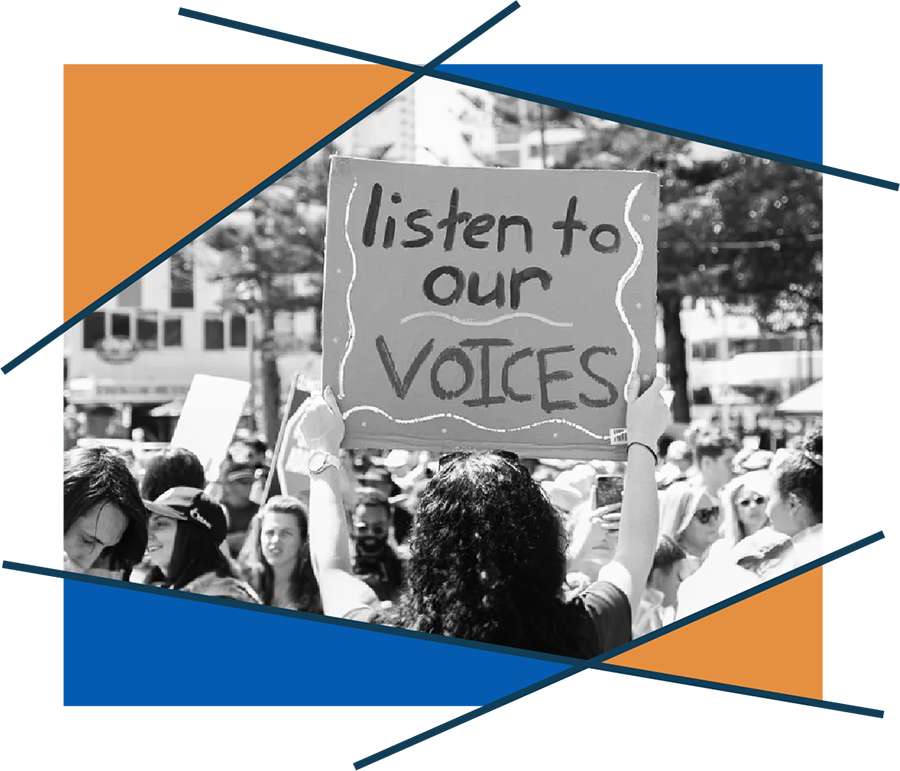SECTION 4
DO’S & DON’TS FOR COMMUNITY VOICE
We Have Good News and Bad News
The bad news first – Community Voice is challenging by nature. There is no one ‘how-to’ guide and no step-by-step process that guarantees you can effectively check it off your list. Rather, Community Voice is a way of being – a continued conversation and cultural shift for individuals and organizations.
The good news – you are likely already doing some elements of Community Voice. Because it is an ongoing process of intentional relationship-building, the most important thing to focus on is creating two-way communication that helps everyone be heard in the process.
While we can’t point to a specific to-do list, there are four elements that show up regularly in our research and conversations that matter the most:
1. Get Proximate
The Oxford dictionary defines proximity as ‘nearness in space, time or relationship.’ By definition, it is impossible to be proximate – or close – to a neighborhood without the investment of time, the sharing of space and the development of relationships. At a recent cultural event she attended, Helen was introduced to a gentleman by a mutual friend. This shared connection created immediate trust and the man began to share his background of homelessness, as well as a deep pride in his family and the journey to get his life back together on his own terms. Today, he serves as a community advocate and ambassador and he leverages his trusted position to help others. Proximity – not surveys or drop-in interviews – enabled this conversation and was a great reminder of the importance of being present.

Show Up Regularly
Attend community gatherings to connect with people in environments where they feel comfortable, heard and validated. Visit locations where individuals regularly go, such as houses of worship, schools or community centers. This gives your organization one-on-one or group interaction to deepen understanding, provides a richer experience about the work you’re doing in the community, and enables you to be physically proximate as a way to cultivate trust.
Communicate Effectively
Communication and messaging can “get lost in the noise,” especially if you are speaking to a community with whom you do not regularly engage. It is essential to speak from the heart and share your own purpose, connecting personally with your audience. Messages such as, “We all want our kids and children to be successful” strongly resonate with parents and families and establish common ground.
Speak and write in a way that’s easily understood so that individuals served are familiar and comfortable with what’s being expressed. This applies to offering communication in English, Spanish, or other languages on different platforms that make sense to your audience through emails, websites, flyers, text messages, voicemails, etc. Ensure messaging is clear and concise. Consider a bulleted format to demonstrate impact.
Make a Long-Term Commitment
Become a mainstay with ongoing check-ins inside the community to remove feelings of abandonment. For decades, marginalized neighborhoods have received the short end of the stick with no lasting interaction due to a lack of funding and capacity. In many cases, neighborhood leaders are used to organizations dropping in with enthusiasm and great intentions but are unable to stay for the long haul. It may take time to establish confidence that you aren’t going anywhere. People need staying power with intentionality and action.
2. Build Trust
Any strong relationship is built on mutual trust, understanding and respect. Trust can start with the research to learn about the assets within a community, to engage informally with people, to partner with existing nonprofits that already have trusted relationships and to secure trust advocates who can break down barriers of doubt and mistrust.
Above all else, respect community members! Always remember that they are the experts and ultimately, it’s the people and their experiences that matter – not the program or the metrics.

Demonstrate Vulnerability in Relationship-Building
Putting yourself in community means that there will be instances when you hear things that you don’t want to hear or the reality is different than what you desire. In these moments, it is best to show up fully, dropping the institutional expectations and goals of clean answers and clear next steps.
There will be times when there is no easy answer or clear solution, leaving grassroots, grasstops and community leaders vulnerable. It’s times like these when we must keep showing up and embracing that vulnerability. We can’t guarantee outcomes, but we can recognize that there is more work to be done and figure out the way forward together.
Be Transparent
It is important to understand that regardless of your personal intentions, people have a range of different experiences – and many people in under-resourced communities have been disappointed by systems in the past, sometimes repeatedly. It is essential to share examples of success while being honest and realistic about what may happen. Do not overpromise in every exchange. Find out who the key representatives are, be ready to listen, check your biases and ask for feedback. Remember, Community Voice is about relationships, not guaranteeing outcomes or putting up an organizational ‘front.’
Listen - Don’t Talk
We’ve said it before, but we’ll offer this one piece of advice again – surveys are no substitute for conversation. Many communities have been surveyed nearly to death by well-meaning nonprofit and private sector organizations. It’s done with the best intentions and is often the starting point that makes the most sense to organizations because it seems clear-cut with rational next steps.
Imagine yourself in that position: someone wants to know about your experience and asks you to respond to a list of 20 pre-determined questions that try to fit your lived experience into neat, reportable data boxes. You would probably be frustrated because your personal experiences are nuanced – and you want the interviewer to see you as a person, not just a data point.
Instead, consider interviews and attend community events. Build trust, then be curious about stories and lived experiences. What you learn will be more informative and authentic than any survey or email could produce!
3. Reorganize the Table
As we work on social impact projects, we regularly allude to ‘bringing people to the table.’ Or sometimes, “If you don’t get invited to the table, go ahead and build your own.” The idea of bringing people to the table has positive, hospitable intentions behind it and in many cases, it’s an acknowledgement that not everyone receives invitations to conversations that impact them for years to come.
While it’s a helpful analogy, we’re not sure that it’s exactly right. No matter how many tables we build and chairs we add to those tables, the host of the gathering still controls the menu, the guest list and more. It begs the question – are we so used to the concept of ‘the table’ that it becomes a place of comfort or even a barrier between real conversation? We think it’s time to evolve the table and welcome more people to the conversation.

Acknowledge Your Role as a Gatekeeper
When we do find ourselves “at a table”, we must consider these issues:
• Whose table is it?
• How do we decide who gets a seat?
• Who decides what is on the agenda – and what is most important?
• How do we make sure that a variety of opinions are being heard, even if they may be uncomfortable or new?
If you are leading a project, this is an easy mistake to make. We develop our networks and it is natural to rely on the voices we know and have relationships with, but they aren’t always the ones closest to the solution. A simple acknowledgement of this dynamic can go a long way. Use that awareness to ensure you are building an inclusive conversation and bringing the most proximate voices to the table.
Look Beyond ‘The Usual People’
Every organization has established relationships with community members and leaders. It is great to look at these relationships – but consider who might be missing from the conversation. This often looks like seeking out people with differing perspectives and then taking the time to find out where they are coming from. A proactive approach is critical. Attending events, hosting focus groups and asking for connections through existing connections are good ways to extend the conversation.
Ask the Hard Stuff
We often head to the ‘table’ with our own agenda, preconceived notions and solutions – and we ask the questions that will ultimately validate those takes. Let’s give people the space to own their narrative, even if it conflicts with our own ideas or assumptions. When we drop the preconceptions and ask the hard stuff, we will likely encounter some hard conversations, but leaning into those talks can lead to more authentic relationships and a greater sense of belonging for everyone involved. This might throw a project or timeline off track – but it would be much more damaging to move forward with an idea that doesn’t have buy-in or authentic engagement.
4. Avoiding the Pitfalls
Even with a focus on proximity and trust-building, we have to be honest and understand that Community Voice is not a process to be solved overnight – it’s a long game. Resist the urge to quickly ‘solve’ things when the reality is different than what you desire. Embrace the vulnerability and develop authentic relationships. You may hear hard truths or lived experience that is hard to reconcile. It’s times like these that show our commitment to the process – or our willingness to walk away. Lean on these tips to avoid the common pitfalls:

Don’t Take It Personally
Humility goes a long way when it comes to Community Voice.
Don’t Do It Alone
There’s an African proverb that states, “If you want to go quickly, go alone. But if you want to go far, go together.”
Don’t Think It’s a One-Time Task
Leaders and organizations who believe community voice is a one-time thing will be quickly left behind. Like any other relationship, care, consistency and attention is essential.
03 |
Care Ring Case Study |
Conclusion: It’s about Equitable Resources and Investment |
05 |
